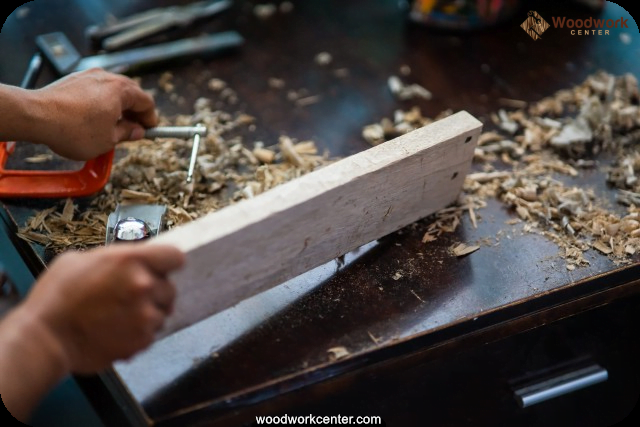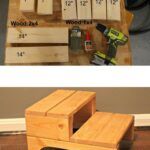Woodworking jigs are essential tools for any woodworker, aiding in creating precision and consistency in their projects. One crucial component in the effectiveness of woodworking jigs is the double-sided tape used to secure pieces in place during the cutting or shaping process. The choice of double-sided tape can significantly impact the accuracy and efficiency of woodworking jigs, making it essential to select the right type for each project.
Double-sided tape for woodworking jigs comes in various formulations, each designed to meet specific needs. From high-tack adhesive tapes to removable options, woodworkers have a range of choices depending on the requirements of their project. Understanding the strengths and weaknesses of each type of double-sided tape is key to achieving successful outcomes when working with woodworking jigs.
In this article, we will explore the different types of double-sided tape available for woodworking jigs, highlighting their unique characteristics and applications. By examining case studies and cost comparisons, woodworkers can make informed decisions about selecting the best double-sided tape for their specific woodworking projects. Additionally, we will provide tips for proper placement and application techniques to ensure optimal performance when using double-sided tape with woodworking jigs.
Importance of Double-Sided Tape in Woodworking
Double-sided tape plays a crucial role in woodworking, especially when it comes to creating jigs that help guide the cutting and shaping of wood. One of the primary reasons why double-sided tape is important in woodworking is its ability to securely hold pieces of wood together during the construction of jigs.
This strong bond ensures that the pieces remain in place and aligned accurately, allowing for precise and accurate cuts to be made. Without reliable double-sided tape, the stability of woodworking jigs could be compromised, leading to errors in the final product.
When it comes to selecting the right kind of double-sided tape for woodworking jigs, there are several factors to consider. The type of material being worked on, as well as the level of holding strength required, will influence the choice of double-sided tape.
For example, if working with heavier or larger pieces of wood, a stronger adhesive may be needed to ensure that the pieces do not shift during use. Additionally, heat resistance may be essential if using power tools that generate heat during cutting or shaping processes.
It is also important to consider the reusability and residue-free removal of double-sided tape when using it for woodworking jigs. Some tapes are designed for temporary use and may leave behind sticky residue when removed, which can affect the quality of future projects.
Therefore, choosing a double-sided tape that can be easily removed without damaging the wood surface is essential for maintaining the integrity of both the jig and the workpiece. By carefully selecting the appropriate type of double-sided tape for woodworking jigs, craftsmen can ensure precision, efficiency, and accuracy in their projects.
| Woodworking Jig Material | Recommended Double-Sided Tape |
|---|---|
| Hardwood | Heavy-duty acrylic-based double-sided tape |
| MDF or plywood | High-tack rubber-based double-sided tape with heat resistance |
Different Types of Double-Sided Tape for Woodworking Jigs
Woodworking jigs are essential tools for any woodworker, as they help ensure accuracy and consistency in the pieces being created. When it comes to woodworking jigs, one crucial element that often gets overlooked is the type of double-sided tape used to secure the workpieces in place. The right double-sided tape can make a significant difference in the quality and precision of your woodworking projects.
There are several different types of double-sided tapes available for woodworking jigs, each with its own set of strengths and weaknesses. One common type is tissue tape, which is thin and flexible, making it ideal for securing delicate or small pieces in place.
Another popular option is carpet tape, which has a stronger adhesive and is suitable for heavier workpieces. Additionally, acrylic foam tape provides both high adhesion strength and weather resistance, making it a versatile choice for outdoor woodworking projects.
When choosing the type of double-sided tape for your woodworking jigs, consider factors such as the weight of the workpiece, the surface texture of the material being secured, and whether you need to reposition or remove the tape easily after use. It is essential to select a double-sided tape that will provide a strong bond without damaging your workpieces when removed.
By understanding the different types of double-sided tapes available and their specific attributes, you can select the best option for your woodworking needs.
| Types of Double-Sided Tape | Characteristics |
|---|---|
| Tissue Tape | Thin and flexible; ideal for delicate or small pieces |
| Carpet Tape | Strong adhesive; suitable for heavier workpieces |
| Acrylic Foam Tape | High adhesion strength; weather-resistant for outdoor projects |
Strengths and Weaknesses of Each Type of Double-Sided Tape
Double-sided tape is a crucial tool in woodworking, especially when it comes to making jigs. However, not all double-sided tapes are created equal, and it is essential to understand the strengths and weaknesses of each type to ensure the success of your woodworking projects. Here are some common types of double-sided tape used in woodworking jigs:
- Acrylic Double-Sided Tape: Acrylic double-sided tape is known for its strong adhesion and durability. It can withstand high temperatures, making it suitable for use with power tools in woodworking. However, acrylic tape may be more challenging to remove and leaves residue on surfaces.
- Removable Double-Sided Tape: Removable double-sided tape provides a strong hold while still allowing for easy removal without damaging the surface. This type of tape is ideal for temporary jigs or when you need to reposition your workpiece multiple times.
- Pressure-Sensitive Double-Sided Tape: Pressure-sensitive double-sided tape activates with pressure, providing a secure bond without the need for additional heat or solvent activation. This type of tape is easy to use but may not be as durable as other options.
It is crucial to consider the specific requirements of your woodworking project when choosing the right type of double-sided tape for your jigs. The strength and weaknesses of each type should be weighed against factors such as the material you are working with, the environment in which the jig will be used, and how long you need the jig to hold.
When selecting double-sided tape for woodworking jigs, always test a small piece on a sample material before committing to the full application. This will allow you to assess its adhesion strength and compatibility with your woodworking materials without risking damage or wastage.
Best Practices for Using Double-Sided Tape With Woodworking Jigs
When it comes to using double-sided tape with woodworking jigs, there are certain best practices that can help ensure successful and efficient outcomes. Whether you are a beginner or a seasoned woodworker, following these guidelines can make a significant difference in the quality of your projects.
Choose the Right Tape for the Job
Selecting the appropriate type of double-sided tape is crucial when working with woodworking jigs. Opt for tapes specifically designed for woodworking applications that offer strong adhesive properties to secure your workpieces firmly in place. Consider factors such as compatibility with various surfaces, temperature resistance, and ease of removal when selecting the tape for your project.
Clean and Prepare Surfaces Properly
Before applying double-sided tape to your woodworking jig, ensure that both the surface of the jig and the workpiece are clean and free from dust, debris, or any residues that could affect adhesion. Use a solvent like isopropyl alcohol to clean the surfaces thoroughly and allow them to dry completely before attaching the tape.
Apply Pressure Evenly
Once you have positioned the workpiece on the woodworking jig using double-sided tape, apply firm pressure evenly across the entire surface to activate the adhesive bond. This step is essential to ensure a strong and secure connection between the workpiece and jig. Consider using a roller or press tool to achieve consistent pressure distribution throughout the bonding area.
Tips for Proper Placement and Application of Double-Sided Tape
When it comes to using double-sided tape for woodworking jigs, proper placement and application are key to ensuring a successful and secure hold. Here are some tips to help you get the most out of your double-sided tape:
- Clean Surface: Before applying the double-sided tape, make sure the surface of both the jig and the workpiece are clean and free of dust, debris, or any other contaminants that could affect the adhesion of the tape.
- Pressure Application: When applying the double-sided tape, be sure to use firm pressure to ensure a strong bond between the surfaces. You can use a roller tool or even your hands to firmly press down on the tape for optimal adhesion.
- Proper Alignment: Take care to align the jig and workpiece accurately before pressing them together with the double-sided tape. This will help ensure that your project turns out as intended without any misalignments.
In addition to these tips, it’s important to consider the specific type of double-sided tape you are using for your woodworking jigs. Depending on the material and weight of your workpieces, as well as environmental factors like temperature and humidity, different types of double-sided tape may be more suitable than others.
By taking these factors into account and following best practices for placement and application, you can enhance the accuracy and efficiency of your woodworking projects with double-sided tape.
Cost Comparison of Various Double-Sided Tape Options
When it comes to woodworking jigs, choosing the right double-sided tape is crucial for achieving precise and accurate results in your projects. In this section, we will explore the various options available for double-sided tape and compare their costs to help you make an informed decision.
One of the most common types of double-sided tape used in woodworking jigs is acrylic foam tape. This type of tape is known for its high strength and durability, making it ideal for securing materials in place during intricate woodworking tasks. While acrylic foam tape may come at a slightly higher cost compared to other options, its superior adhesive properties make it worth the investment for professionals and hobbyists alike.
Another popular choice for double-sided tape in woodworking jigs is cloth-backed tape. This type of tape offers a good balance between strength and flexibility, making it versatile for various applications.
Cloth-backed tape typically falls within a mid-range price point, making it a practical choice for those looking for a reliable option without breaking the bank. When considering what kind of double-sided tape for woodworking jigs to use based on cost, it’s important to weigh the benefits of each type against your budget and project requirements.
Case Studies
When it comes to woodworking jigs, the use of double-sided tape can greatly improve the efficiency and accuracy of your projects. By securely holding pieces in place without the need for clamps, double-sided tape allows woodworkers to create intricate and precise cuts with ease. In this section, we will explore some real-life examples of successful woodworking jigs made with the right kind of double-sided tape.
Custom Router Jig for Dovetail Joints
One common application of double-sided tape in woodworking is creating custom router jigs for dovetail joints. By carefully aligning and securing pieces of wood with double-sided tape, woodworkers can guide their routers to create perfect dovetail joints every time. The strong adhesive properties of certain types of double-sided tape ensure that the workpieces remain in place during the routing process, resulting in clean and accurate cuts.
Table Saw Sled for Angled Cuts
Another example where double-sided tape shines is in the creation of a table saw sled for angled cuts. By attaching wooden blocks or stoppers to the sled using double-sided tape, woodworkers can easily adjust and secure their workpieces at precise angles for cutting. This method eliminates the need for complex clamping systems and allows for quick adjustments when working on multiple angled cuts within a project.
Assembly Jig for Cabinet Making
For cabinet makers, an assembly jig made with double-sided tape can be a game-changer. By constructing a jig that holds cabinet components together at precise angles and measurements, woodworking professionals can streamline their assembly process and ensure consistent results across multiple units. The use of high-quality double-sided tape provides enough strength to keep the pieces in place until they are permanently joined, making the assembly process faster and more efficient overall.
These real-life examples illustrate how choosing the right kind of double-sided tape for woodworking jigs can make a significant impact on the quality and efficiency of your projects. By understanding the strengths and weaknesses of different types of tapes, as well as implementing best practices for their usage, woodworkers can elevate their craft to new heights with precision and accuracy.
Conclusion
When it comes to choosing the right double-sided tape for your woodworking projects, it is important to consider the specific requirements of your jigs and the materials you are working with. The type of double-sided tape you select can greatly impact the success and efficiency of your woodworking tasks. Understanding the strengths and weaknesses of different types of double-sided tape will allow you to make an informed decision that best suits your needs.
Whether you opt for a general-purpose double-sided tape, mounting tape, or carpet tape for your woodworking jigs, each option has its own advantages and disadvantages. General-purpose double-sided tape is versatile and easy to find, making it a popular choice among woodworkers. On the other hand, mounting tape offers greater strength but may be more challenging to remove.
Carpet tape provides a strong hold but may leave residue on your materials. By weighing these factors against your project requirements, you can determine which type of double-sided tape is most suitable for your woodworking jigs.
In conclusion, selecting the right double-sided tape for woodworking jigs is crucial in ensuring the success and efficiency of your projects. By considering the specific needs of your tasks, understanding the different types of double-sided tapes available, and following best practices for application and placement, you can create effective and reliable woodworking jigs.
Remember to also factor in cost considerations when comparing various options to find the best value for your investment in materials. Choose wisely to achieve optimal results in your woodworking endeavors.
Frequently Asked Questions
What Kind of Double-Sided Tape to Use for Woodworking?
When it comes to woodworking, using double-sided tape can be a game changer. The best kind of double-sided tape to use for woodworking is one that is strong and durable enough to hold wood pieces together securely. Look for tapes specifically designed for woodworking applications with a strong adhesive that can withstand the stresses of woodworking projects.
What Tape to Use for Woodworking?
When choosing tape for woodworking, it’s essential to select a type that is suitable for the task at hand. For temporary attachments or holding pieces in place while working on a project, double-sided tape is an excellent choice. Make sure to use high-quality tape that can provide a secure bond without damaging the wood surface when removed.
Can Double-Sided Tape Be Used on Wood?
Double-sided tape can indeed be used on wood in various woodworking projects. It offers a convenient way to temporarily hold pieces together during assembly or when making precise cuts without the need for clamps or other tools.
Just make sure to choose a double-sided tape that is strong enough to withstand the weight and stress placed on it during woodworking tasks.

Hi everyone! I’m a woodworker and blogger, and this is my woodworking blog. In my blog, I share tips and tricks for woodworkers of all skill levels, as well as project ideas that you can try yourself.





